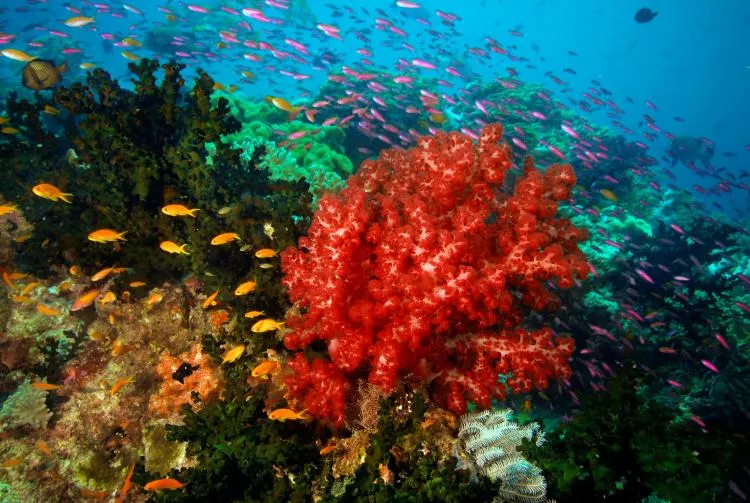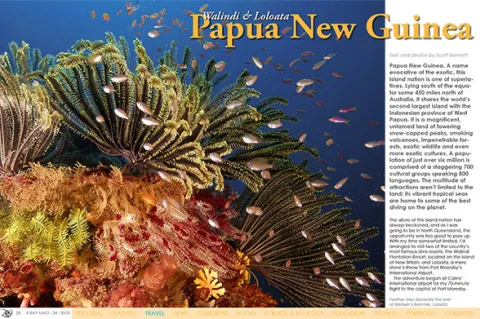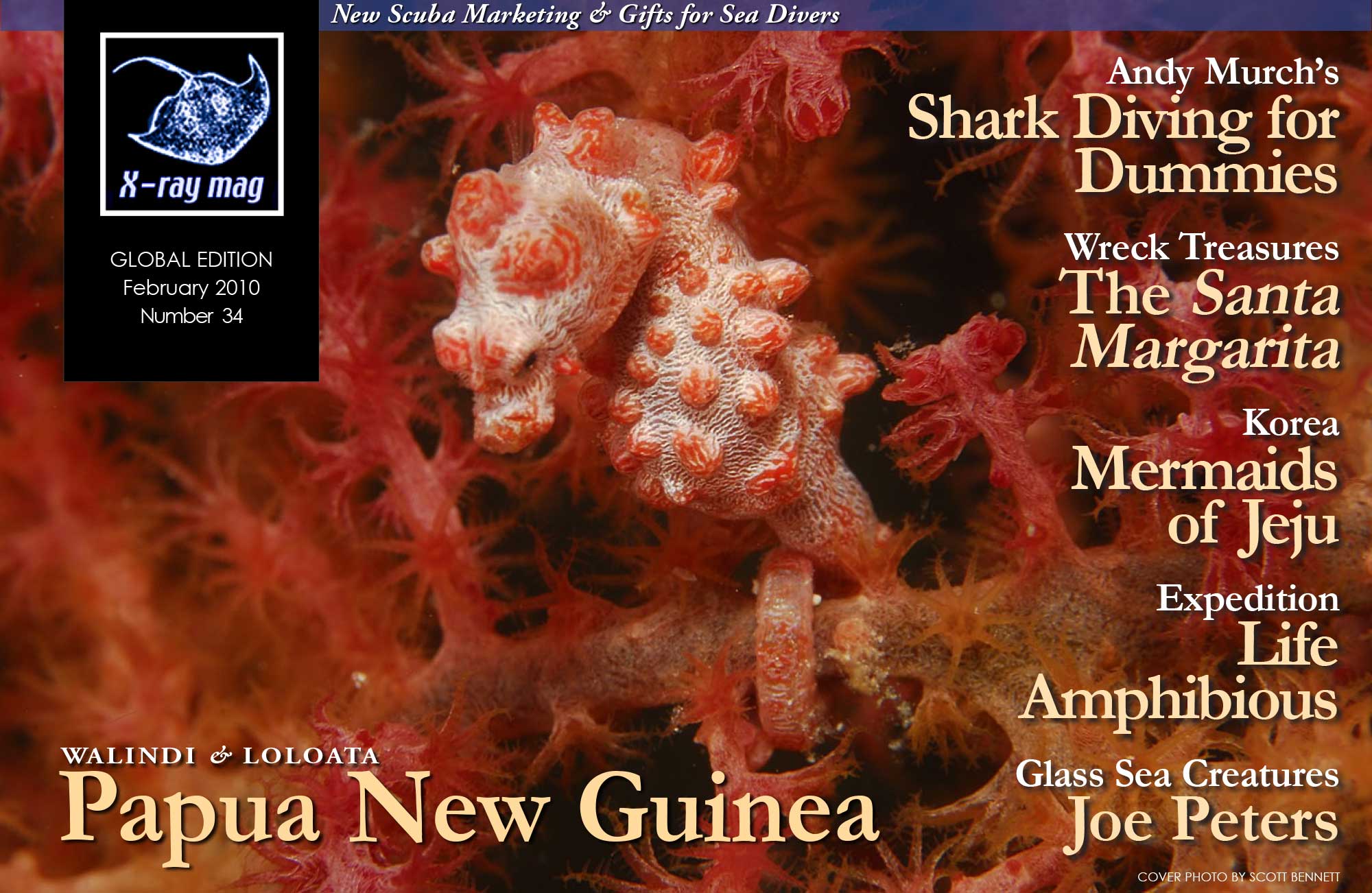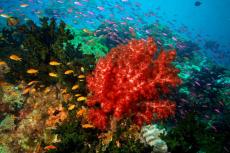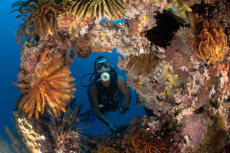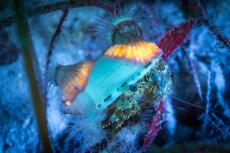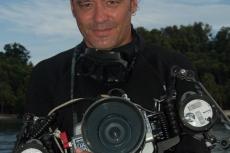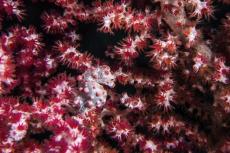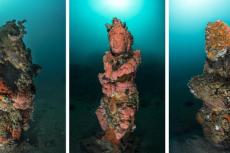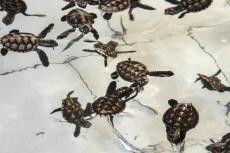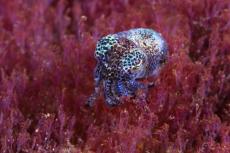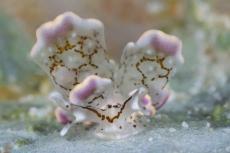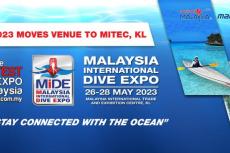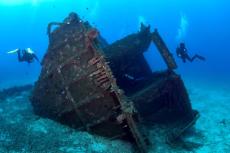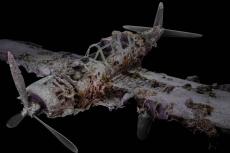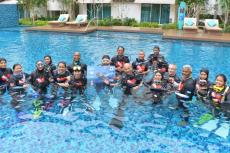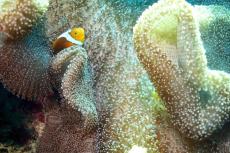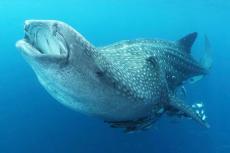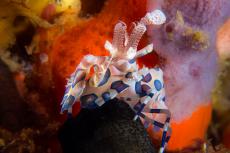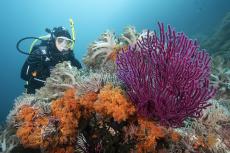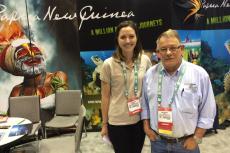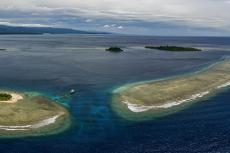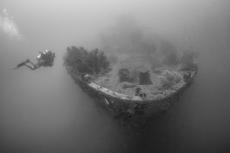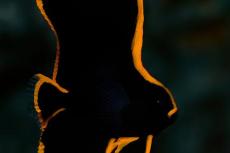Papua New Guinea. A name evocative of the exotic, this island nation is one of superlatives. Lying south of the equator some 450 miles north of Australia, it shares the world’s second largest island with the Indonesian province of West Papua.
Contributed by
The allure of this island nation has always beckoned, and as I was going to be in North Queensland, the opportunity was too good to pass up. With my time somewhat limited, I’d arranged to visit two of the country’s most famous dive resorts: The Walindi Plantation Resort, located on the island of New Britain, and Loloata, a mere stone’s throw from Port Moresby’s International Airport.
The adventure began at Cairns’ International airport for my 70-minute flight to the capitol of Port Moresby. From there, I would connect with a domestic flight to Hoskins, on the island of New Britain. Checking in, I was struck with a bombshell: I’d have to pay AU$260.00 in excess baggage fees! The carry-on rules were equally strict, allowing only one bag. I stuffed my computer and hard drives in my camera bag and grudgingly paid my bill. Someone once told me that situations like these are the reason God created credit cards.
Soon, all was forgotten as my flight winged its way over the azure waters of the Coral Sea. Upon arrival in Port Moresby, I collected my bags and headed to the domestic terminal. Several hours later, I boarded a Dash 8 and took off for Hoskins, hoping to get to Walindi in time to squeeze in a night dive. Shortly after takeoff, we traversed the cloud-swathed spine of emerald mountains bisecting the island. Upon crossing the Dampier Strait, the clouds rolled in and by the time we landed, the heavens had opened into a torrential downpour.
More troubling was the realization that two of my bags were missing, one of which contained all of my underwater camera equipment. A quick phone call to Port Moresby confirmed they were still there and would arrive the next morning.
My driver then loaded the van with my sole suitcase and headed for Walindi. Minutes later, the heavy downpour ceased abruptly. However, the air was still laden with humidity, a fact evidenced by the swathes of mist wafting lazily above the road. Legions of frogs were scattered along the damp pavement, of which my driver did an impeccable job of avoiding!
Around 30 minutes later, we finally turned up the tree-lined roadway leading to the Walindi Plantation Resort. On hand to meet me was owner, Max Benjamin, along with a pair of curious canines that he jokingly called his sniffer dogs. Having checked out the new arrival, they quickly retreated for the dining area. I was just in time for a BBQ dinner and a cold South Pacific lager, the perfect antidote for a long day of travel.
Enroute to my bungalow after dinner, the rain returned, necessitating a somewhat a hasty retreat. With no camera gear to assemble, I decided to call it an early night. The rhythmic patter of rain on the roof accompanied with a chorus of frogs soon lulled me into a deep and pleasant slumber.
Early the next morning, stepping outside my fan-cooled bungalow was like stepping into a sauna. The rain that had fallen throughout the night had finally ceased and was replaced by humidity of epic proportions.
The resort grounds were like an immense tropical garden. Massive trees dripped with epiphytic ferns, while the air was redolent with a profusion of tropical flowers. Something else was in the air too; a faint yet unmistakable hint of sulphur. I discovered the resort’s next-door neighbour is Mt Garuna, an active yet benign volcano.
Walindi
Walindi Plantation Resort really is a plantation. Initially established as a cocoa plantation in 1935, the property was purchased in 1969 by Australian agriculturist, Max Benjamin, who replanted the property with oil palms.
In the early 1970’s, Max began to explore Kimbe Bay and soon discovered a marine habitat of unparalled diversity right on his own doorstep. Max eventually shifted his focus from the palm plantation to running a dive business with his wife Cecile. By 1983, two guest bungalows
(...)
Published in
- Log in to post comments

